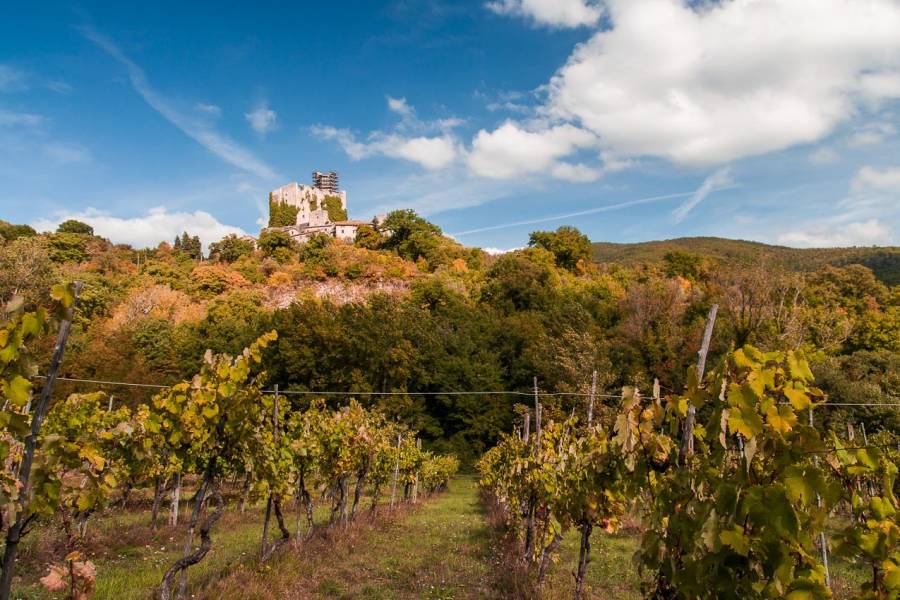Val di
Pierle
- Medieval Fortress
- Viewpoint
The history of Val di Pierle is closely linked to the history of the splendid castle (la Rocca) that dominates the valley. The castle was built prior to the 10th century and belonged to the marquises of Monte Santa Maria Tiberina. The first record relating to the castle dates back to the 10th century and is about the will of one marquis of Colle and Monte Santa Maria.
The last known record dates back to 1325 and proves the handover to the Degli Oddi of Perugia by the conqueror Visconti. In 1371, according to the writings of Ranieri Casali, knight of Rodi, the castle was rebuilt by the Casalis, lords of Cortona, later lords of Pierle. An existing inscription in Rocca di Pierle proves this and is also referred to by Paolo Uccello in “History of Cortona” written in 1835.
From this time on the Rocca experienced a turbulent history, which cannot be narrated in detail here. Nonetheless, in 1576 Francesco de Medici, Duke of Tuscany, ordered the destruction of the castle in order to free the region from supposedly marauding bands, who terrorized the region in the second half of the century.
In 1428 the Pierle valley bought its political, economic and legal independence from Cortona with a contract of deal from the Repubblica di Firenze (Republic of Florence) or, in other words, by paying 1200 gold ducats. Right after being promoted to the position of Comune the territory of the valley was divided into three “Terzi” di Pierle, Mercatale and Lanciano:
- Terzo di Pierle obtained the castle (Rocca di Pierle), and the church of San Biagio which was linked to the church of the Vico valley.
- Terzo di Mercatale ruled the entire valley.
- Terzo di Lanciano ruled the church of San Donnino and the surrounding hills.
Historical records show that the valley was not a very hospitable place. The wild River Niccone had no embankments so that heavy rainfalls inundated the fields destroying the harvests, therefore economic conditions were bad. Locals dedicated themselves mostly to stockbreeding or to silk cocoonery. Trading was done mainly with Cortona and nearby Sorbello County and mostly consisted in volatile-egg- pork- and coal-trading. Trading with Cortona was made even harder due to the particularly bad roads. The entire region consisted of dirt roads and mule tracks.
Only after embankments had been built around the Niccone River living conditions improved and the population grew, but a century later the valley began to lose many of its privileges and independence until its administration was annexed to the one of Cortona.







